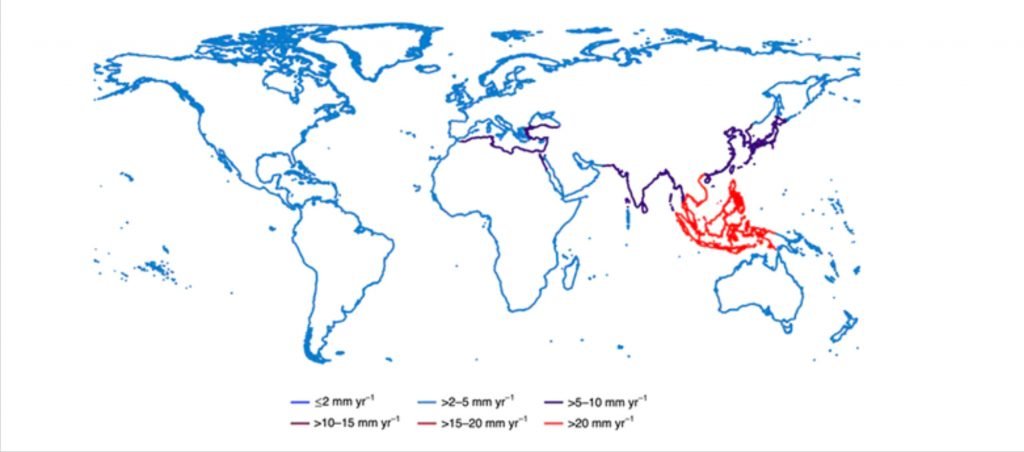Current Affairs (18th March 2021)
No back-door pact for defaulting promoters
CONTEXT:
- The Supreme Court has ruled that promoters of insolvent companies, which are barred from bidding for their own companies under Section 29A of the Insolvency and Bankruptcy Code (IBC) cannot use any scheme or arrangement to gain control of their company even if it goes into liquidation.
What does the ruling by the Supreme Court say?
- In a case involving the liquidation of Gujarat NRE Coke Limited, the National Company Law Appellate Tribunal (NCLAT) had in 2019 held that any person who was ineligible, under Section 29A of IBC, to bid for his company, was also barred from proposing a scheme of compromise and arrangement under Section 230 of the Companies Act.
- Section 230 of the Companies Act allows promoters or creditors of the company to propose a scheme of arrangement or compromise under which the debt of the company can be restructured.
- In its judgment upholding the NCLAT decision, the apex court said that while Section 230 would be applicable for promoters and creditors in normal course of the workings of the company, it would not be applicable if the company is facing liquidation under IBC.
- The company has to be protected from its management and a corporate death. It would lead to a manifest absurdity if the very persons who are ineligible for submitting a resolution plan, participating in the sale of assets of the company in liquidation or participating in the sale of the corporate debtor as a ‘going concern’, are somehow permitted to propose a compromise or arrangement under Section 230 of the Act of 2013.
How does it impact promoters of companies?
- The clarification by the Supreme Court with respect to participation of promoters in liquidation process of an insolvent company will speed up the resolution process.
- Since the objective of the IBC is to find a suitable buyer for the company and liquidation is ordered only in cases where there are no viable plans submitted, experts believe that a quick liquidation is of utmost importance to maximise the value of assets of the company.
- Apart from this, it also settles down the conflicting judgments given by different benches of the National Company Law Tribunal (NCLT), wherein these forums had, in order to follow the IBC’s principle of value of asset maximisation, allowed some of the promoters to re-bid for the company or propose some arrangement when it was sent to liquidation.
e-Mobility
Context:
- Indian Minister of Petroleum and Natural Gas & Steel, along with Minister of Energy, Israel witnessed the launching of a Joint Venture (IOC Phinergy Private Limited) between Indian Oil Corporation Limited (Indian Oil) and Phinergy, an Israeli start-up company specializing in hybrid lithium-ion and aluminium-air/zinc-air battery systems.
About:
- Based on domestically available aluminum, the joint venture plans to manufacture Aluminum-Air systems in India.
- Under this technology, recycling of used Aluminum will help India in becoming “Aatmanirbhar” for energy requirements.
- The new Indo-Israeli JV also intends to develop fuel cells and indigenous hydrogen storage solutions for promoting green mobility.
- This collaboration was initiated during the visit of Indian Prime Minister to Israel in July 2017. Following which, Letter of Intent was exchanged between the respective companies during the visit of Prime Minister of Israel to India in 2018.
- In a significant boost to India’s pursuit of e-mobility, the two of the leading Automotive manufactures in India, Maruti Suzuki and Ashok Leyland, signed Letters of Intent (LOI) with the newly incorporated JV IOC Phinergy Limited during the ceremony.
- The collaboration between Indian Oil and Phinenergy marks yet another substantive step towards the collaboration between the two countries in the Energy sector.
Poshan Pakhwada
Context:
- Ministry of Women and Child Development is celebrating Poshan Pakhwada from 16th to 31st March, 2021.
About:
- Addressing nutritional challenges through Food Forestry and organizing Poshan Panchayats are the key focus areas for Poshan Pakhwada 2021.
- To address nutritional challenges, distribution of 4 saplings of nutrition rich plants per Anganwadi Centre (AWC) in the Aspirational Districts will be done under the supervision of local panchayat and DM/DC by National Medicinal Plants Board (NMPB), Ministry of AYUSH.
- Poshan Panchayat will be organized involving members of PRIs for generating awareness on topics like malnutrition prevalence and its consequences, Poshan Vatika, food forestry, identification of SAM/MAM children and its management.
- Poshan Abhiyan, launched by the Prime Minister on 8th March 2018, has reached a long way in ensuring wider people’s participation.
- It endeavors to improve nutritional outcomes in a holistic manner in convergence with other Ministrie
- Behavioural change at individual and community level is an important component to achieve the desired goals of Poshan Abhiyan.
- During the last held nutrition-centric Jan Andolan based celebrations during Poshan Maah in September 2020, setting-up of Poshan Vatika gained momentum, as a result of which 10.87 lakhs plantation drives in the form of Kitchen Garden held at Anganwadi level. Simultaneously, during the same period, AYUSH based interventions further helped disseminating knowledge on age-old nutritional practices.
- Ministry of Women & Child Development will be the nodal Ministry for coordinating activities during the Poshan Pakhwada.
- In the State/UT, Department of Women & Child Development /Social Welfare Department will be the nodal department for Poshan Pakhwada.

Mars early water
Context:
- According to a new study funded by the National Aeronautics and Space Administration (NASA), liquid water disappeared from the surface of Mars three billion years ago, leaving traces of innumerous rivers and deep oceans etched on the Red Planet. The water, which was so far thought to have escaped into space, might be trapped in the minerals of its crust.
About:
- This means beneath its arid and cold shell, lies most of its early water – anything between 30-99 per cent – making the planet a little less of a wasteland as it was thought to be.
- Scientists associated with this research arrived at this conclusion after analysing on data of the atmosphere and geology of Mars collected during past missions.
- Mars has low gravity and its atmosphere is also exposed to solar winds. So, scientists believed that liquid water was swept up from the surface of the planet into space by these hot winds.
- But something was off about this assumption. Not all the hydrogen molecules in water are equal. While a majority is light and can escape the planet’s gravity and move into space, a tiny part is ‘heavy hydrogen’ called deuterium that is more likely to linger in the atmosphere.
- The ratio of hydrogen to deuterium in the Martian atmosphere was already known to the scientists. So, if all the water on Mars escaped into space through its atmosphere, the amount of deuterium in the atmosphere would be a lot more than it currently is.
- The second clue came from studying Martian regolith, which is the loose earth and rocks that cover the planet’s surface. Clay and other hydrated minerals form when water interacts with rocks. The study found “widespread hydrated mineral formation” on the crust of the Red Planet.
- This indicates that the planet once had large volumes of water splashing on its surface, something that is not consistent with the amount of deuterium found in its atmosphere if all of it really escaped into space.
- Also, unlike Earth, the crust of Mars does not have plate tectonics or moving plates that form the shell of the planet.
- On Earth, water that seeps into the mantle is spewed back to the crust and atmosphere by these plate movements. But water that has travelled within, is trapped.
Sea levels
Context:
- It is well known that climate-induced sea level rise is a major threat. What is less well known is the threat of sinking land. And in many of the most populated coastal areas, the land is sinking even faster than the sea is rising.
What is subsidence?
- Parts of Tokyo for instance sank by four metres during the 20th century, with two metres or more of sinking reported in Shanghai, Bangkok, and New Orleans. This process is known as subsidence.
- Slow subsidence happens naturally in river deltas, and it can be accelerated by the extraction of groundwater, oil or gas which causes the soil to consolidate and the surface to lose elevation.
- Subsidence leads to relative sea level rise (sea level rise plus land sinking). It turns croplands salty, damages buildings, causes widespread flooding and can even mean the loss of entire coastal areas.
- Subsidence can threaten flooding in low-lying coastal areas, much more so than rising sea levels.
- In fact, while the average coastal area experiences relative sea level rise of less than 3 mm per year, the average coastal resident experiences a rise of around 8 mm to 10 mm per year. This is because so many people live in deltas and especially cities on deltas that are subsiding.

What can be done?
- Building a sea wall or dike is one immediate solution. This of course stops the water coming in, but remember that the sea wall is sinking too, so it has to be extra large in order to be effective in the long-term.
- In urban areas, engineers cannot raise ground easily: that can take decades as buildings and infrastructure are renewed. There is no simple solution, and large-scale urban subsidence is largely irreversible.
- Some cities have found “solutions”. Tokyo for instance managed to stop subsidence from about 1960 onwards thanks to stronger regulations on water pumping, but it cannot get rid of the overall risk as parts of city are below sea level and depend on dikes and pumps to be habitable. Indonesia’s bold proposal to move its capital city may be the ultimate solution.
- Increased urbanisation especially in deltas areas and the demand for freshwater means subsidence will remain a pressing issue in the coming decades.
- Dealing with subsidence is complementary to dealing with climate-induced sea level rise and both need to be addressed.
- A combination of rising seas and sinking lands will increasingly leave coastal cities at risk.


